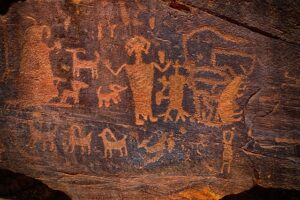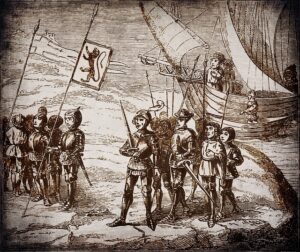People fighting against established authority and not obeying the rules are usually known as rebels. The movement in concern gets termed as rebellion. Looking into the pages of History, there have been multiple rebellions from the early days of civilization, each with its own agenda. While most of the rebellions did last for a decade or two, one surpassed the average lifespan of humans, lasting 85 years. The Dagohoy rebellion, i.e., the longest running rebellion in History.
Led by Francisco Dagohoy, a revolutionary from the Philippine Islands, the Dagohoy rebellion lasted from 1744 to 1829 – roughly 85 years. The longest running rebellion in History served the purpose of getting freedom from the Spanish colonial government on the island of Bohol.
Who Is Francisco Dagohoy?
Francisco Dagohoy was born Francisco Sendrijas in 1724, sharing his mother’s surname, while his father’s last name was Bantilan. The last names belong to the list of native surnames from Inabanga, Bohol. Francisco Dagohoy shared his mother’s last name because, at that time, his father, from the “Bantilan Tribe” as part of “Datus- Alimaong,” was not married to his mother. The situation was complex, and the Datus, or landlords, indulged in a conflict with the Spanish government. So, naturally, the Spanish priests of that time were not willing to marry them off and declare them husband and wife.
Born as a native of Barangay Cambitoon, Bohol, Francisco Dagohoy was one of the captains of the town. His journey from Francisco Sendrijas to Francisco Dagohoy owes to an ‘amulet’ he wore. In the native Cebuano language, ‘amulets’ are known as ‘Dagon.’
Moving on to his name change, the term ‘Dagohoy’ is an interconnection to the Visayan phrase, “Dagon sa huyuhoy.” This stands as the “talisman of the breeze.” As per local belief, Francisco’s amulet gave him all the power to fly or jump from one hill to another. He was gentle like the wind or the “hoyohoy.” Also, there were acclamations that Francisco could see clearly in the dark and had the power to be invisible whenever he wanted.
The Truth Behind The Longest Running Rebellion In History
A deeper look into history will reveal that revolts and rebellions have always been the after-effect of atrocities by the powerful over minorities. Also, when the natives of a place have been denied their rights, they rose to revolt.
Likewise, the incident of the Christian priest Father Gaspar Morales denying the burial of Sagarino Dagohoy, who was Francisco Dagohoy’s brother, led to the up rise of the Dagohoy Rebellion – the longest running rebellion in History.

From 1744 to 1829, the longest running rebellion in History started as a promise from Francisco Dagohoy to get justice for his brother’s soul. Also, Francisco and his people, at the same time, were trying to bring an end to the unwanted oppression of forced labor, payment of tributes, and excessive tax collection by the Spanish colonial government.
A Deeper Look Into The Longest Running Rebellion In History
Looking into further details about the rebellion, a force comprising three thousand men marched forward. Father Guiseppe Lamberti was first on the killing spree, with Father Gaspar Morales being the second on the 24th of January, 1744. Within no time, the initial army of three thousand became twenty thousand. As a safe place for the army to retreat, the mountains of Cayelanga and Inabanga were chosen.
Over time the Dagohoy rebels successfully eliminated all the regular attempts made by the Spanish forces to reassert their control over the territory. Seeking inspiration, the immediate natives around Bohol Island, large islands within the Visayas Province, and other islands throughout the colony rose to revolt. But those were not successful as the Dagohoy Rebellion.

Francisco Dagohoy, as the leader, trained his followers in guerrilla warfare and made them take advantage of the local terrain, covered in lush green vegetation, to hide from the Spanish army. Over the next few years, there was a constant tiff between the Spanish army and the Dagohoy rebels. Here the latter (Dagohoy rebels), with their good techniques, Francisco Dagohoy’s special powers (as locals believe), and the rising number of men in the army made it all possible.
Over time Spain lost many of its other colonies to revolts and the rise in the cost of maintaining an empire, weakening their hold. However, they did continue to try their best, with the motive to suppress the rebels. But Francisco Dagohoy’s expertise made the rebellion continue to be a success.
With the death of the main leader (Francisco Dagohoy), things started going downwards. Thus bringing a gradual end to the longest running rebellion in History.



